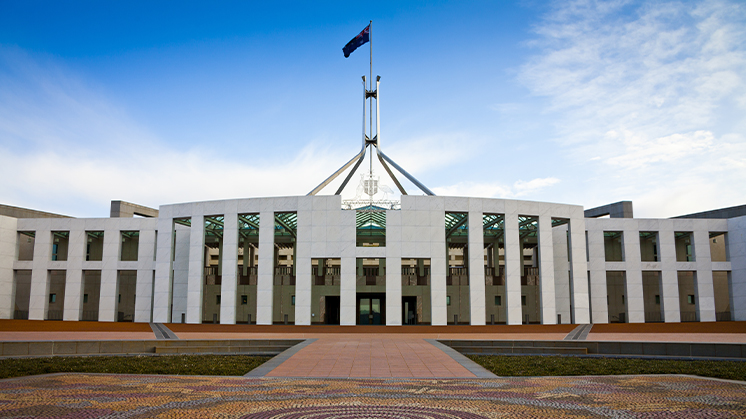
“The economy is coming back. Australia is coming back. And this Budget will ensure we come back even stronger, securing Australia’s recovery.” – Josh Frydenberg, 2021-2022 Federal Budget Speech
This piece has been authored by Catherine Chivers, Senior Manager Strategic Advice at Perpetual Private and a team of specialists at Perpetual including Alison Carrapetta, Saul Bernstein, Chandana Narayan and Jai Sartori.
It is important to remember that this material relates to proposals which have not yet been legislated, and our analysis contained here should be viewed in that context. We recommend that you do not take any specific action until the Government provides greater detail in relevant draft legislation.
Summary
Treasurer Frydenberg handed down his third Federal Budget on 11 May 2021, and in an ever-continuing COVID landscape, this year’s Federal Budget measures are guided by values; reward for effort, the power of aspiration and enterprise, upholding personal responsibility and always providing a helping hand to those who need it.
The Budget comprises a tapestry of measures, intricately woven together to enable Australia’s economic recovery to gain further momentum.
This year’s Budget returns to focussing on core policy topics that further lay a foundation for continued overall economic stability, additional job creation initiatives and a pledge to sustain key essential services such as childcare, health and aged care, education/training and infrastructure.
Home ownership measures provide further support for housing affordability by assisting first home buyers and single parents to access housing with minimal deposit requirements. Further, the releasable amount permitted under the First Home Superannuation Saver Scheme will also increase.
Job creation initiatives for younger Australians plus support for the aged care sector and NDIS will provide a valuable financial boost to the most vulnerable segments of society.
Capital to expand Australia’s manufacturing capability will be committed to underpin future jobs growth across crucial emerging priority segments, including vaccine products and clean energy environmental initiatives.
In line with the uncertain geopolitical context, addressing national security matters is another Budget measure.. Environmental concerns are also front of mind for policymakers with significant sums dedicated to that objective. Furthermore, much needed support for farming communities adversely affected by the recent drought, bushfires and floods will also be provided.
Finally, measures addressing mental health and women’s personal safety - perhaps two of the most pressing social issues of our generation – are receiving much needed fiscal support.
Superannuation
1. Removal of the work test for superannuation, but not for all contribution types
From 1 July 2022, individuals aged 67 to 74 years (inclusive) will be able to make or receive non-concessional contributions (including the use of the bring-forward rule); or make salary sacrifice superannuation contributions without meeting the work test. The usual criteria of making these contributions remains otherwise unchanged.
Importantly, a work test must still be met for personal (deductible) concessional contributions to be made.
What does this mean for you?
- This measure will allow you to place more money into a tax effective environment over a longer period.
- If you’re currently aged 67-74 you may now be able to make contributions to superannuation in future years, and thus may benefit from having your retirement planning strategy re-visited.
- If you’re currently aged 67-74 and have worked casually or part-time, you may now have extra flexibility in making contributions to your superannuation.
2. Superannuation guarantee eligibility - $450 per month threshold abolished
From 1 July 2022, the $450 per month minimum threshold for superannuation guarantee eligibility will be removed, improving equity across the superannuation system.
This long overdue change will target approximately 300,000 low income earners, 63% of whom are women, enabling full access to superannuation as part of their remuneration.
What does this mean for you?
- You (and your family members) can now receive superannuation guarantee contributions irrespective of your income level.
3. Downsizer contributions – access from age 60
The downsizer contribution allows individuals to make a one-off, post-tax contribution to their superannuation of up to $300,000 per individual from the proceeds of selling a home without it counting towards their non-concessional contribution cap.
From 1 July 2022, it is anticipated that the eligibility age to make downsizer contributions into superannuation will be lowered from 65 to 60 years of age.
What does this mean for you?
- You now have the earlier benefit of contributing more funds into the superannuation environment, which is especially useful if you want to align transitioning to retirement with moving home – perhaps a ‘sea’ or ‘tree’ change.
- The implications of accessing the downsizer contribution earlier need to be considered carefully – as it could reduce, or even eliminate, any means-tested social security or DVA income support payments that you may have previously been eligible to receive.
4. Legacy retirement products
Individuals locked into legacy retirement products which include market-linked, life-expectancy and lifetime products will now have the chance to transfer into newer, more contemporary products without penalty over a two-year period. Note: this does not apply to flexi-pension products or a lifetime product in a large APRA-regulated or public sector defined benefit scheme.
What does this mean for you?
- You will be able to exit your existing legacy product and transfer capital and reserves into a newer product class.
- The social security outcomes of effecting a transfer must be carefully contemplated to ensure that any product movement is in your best interests.
5. Increase in First Home Superannuation Saver Scheme maximum releasable amount
The maximum releasable amount for the First Home Superannuation Saver Scheme (FHSSS) will be increased from 1 July 2022 from $30,000 to $50,000. Both voluntary concessional and non-concessional contributions can be contributed and utilised as part of the FHSSS.
What does this mean for you?
- If you or a family member are saving for a first home purchase you can now do so more effectively via the FHSSS, with a higher accessible sum involved.
6. Increased flexibility for expatriate clients to make superannuation contributions to an SMSF or SAF
From 1 July 2022, the ‘active member’ test for both SMSF and SAFs will be abolished.
Also, from this date, the ‘central management and control’ test ‘safe harbour’ will increase from two to five years.
These changes will align the contributions treatment for an SMSF or SAF to that of a large APRA fund. These represent very welcome measures to provide additional flexibility for offshore Australians who would like to make optimal use of their fund.
What does this mean for you?
- If you’re currently utilising either an SMSF or SAF structure and are temporarily overseas or intend on going overseas in the future, you will have greater capacity to maintain and make contributions within your preferred superannuation vehicle.
Tax
1. Low and middle income tax offset
The Government will retain the existing Low and Middle Income Offset (LMITO) for the 2022 financial year. The impact will depend upon an individual’s taxable income as detailed in the table below. As with the current arrangement, the LMITO will be calculated following the lodgement of the individual’s annual income tax return and received automatically.
|
Taxable Income |
LMITO Tax Offset |
|
$0 - $37,000 |
$255 |
|
$37,000 - $48,000 |
$255 plus $0.075 per $1 up to $1,080 |
|
$48,000 - $90,000 |
$1,080 |
|
$90,000 - $126,000 |
$1,080 minus $0.03 per $1 to $0 |
What does this mean for you?
- Those within the relevant taxable income threshold will receive the LMITO upon completion of their FY22 tax return.
2. Modernising the individual tax residency rules
The method in which individual tax residency is determined will be subject to fundamental change. The key element of the change is the ‘bright line’ test of whether an individual has been physically present in Australia for more than 183 days.
If they have, the individual will be considered a tax resident of Australia. Individuals who do not meet this ‘bright line’ test will be subject to secondary tests that depend on a combination of physical presence and measurable, objective criteria. Note: the anticipated start date of this measure is presently unknown.
What does this mean for you?
- It will likely be easier for individuals to become tax residents of Australia. This may be undesirable as Australia is a high-taxing jurisdiction, which also taxes on a worldwide basis.
- The compliance costs associated with managing your taxation affairs may reduce if your tax residency position is more easily clarified.
3. Medicare levy low-income thresholds increasing and continuing
Based on Consumer Price Index movements, the 2% Medicare levy will continue to be exempt for low income earners, with thresholds increasing retrospectively from 1 July 2020. This measure will apply to singles, families, seniors, and pensioners.
What does this mean for you?
- Those under the increased thresholds may now be exempt from paying the Medicare levy, freeing up capital for other purposes.
4. Reducing red tape and improving taxing points for Employee Share Schemes
This measure proposes to remove cessation of employment as a taxing point, as well as reduce red tape on Employee Share Scheme (ESS) interests issued. The commencement date will be the first financial year following the legislation being passed, which at this stage is likely to be 1 July 2022 at the earliest.
Individuals that are issued ESS interests will no longer be locked into a deferred taxing point arising from cessation of employment. Employers that charge or lend for ESS interests in unlisted companies will be streamlined, up to $30,000 per employee per year.
What does this mean for you?
- If you receive ESS interests, you will not be restricted to a taxing point at the date of cessation of your employment. This measure outlines that CGT can be deferred for a maximum of 15 years from issue regardless of status of employment with the employer.
- Consistent with recommendations from the Global Business and Talent Acquisition Taskforce, this measure will ensure individuals work competitively within industry or on a global stage.
Social Security and NDIS
1. Childcare
From 1 July 2022, families are set to receive more support with the Child Care Subsidy (CCS) to increase for those with multiple children under age 6 in childcare. The CCS will increase for those who earn less than $353,680 per annum and have more than one child in care. Specifically, the subsidy will increase and be capped at 95% for the cost of childcare for second and subsequent children aged under 6.
In addition, the current subsidy cap of $10,560 per child each financial year has been abolished.
What does this mean for you?
- For families with more than one child in care, an increase in the subsidy received will leave more cash flow for other family expenses – or investment.
- For all families, no subsidy cap means that childcare costs remain consistent throughout the entire year.
2. Pension Loan Scheme
The Pension Loan Scheme will be expanded and improved. This scheme allows for pensioners who have equity in Australian Real Estate to receive payments (i.e. a loan) in addition to the standard fortnightly pension.
The expansion will allow access to up to two lump sums advances in any 12-month period to a maximum of 50% of the annual Age Pension amount. In addition, to ensure pensioners do not have negative equity in their property the Government will introduce a ‘no negative equity’ guarantee.
What does this mean for you?
- The measure will be of interest to those eligible for the Age Pension who are seeking to supplement their existing income to meet living expenses.
